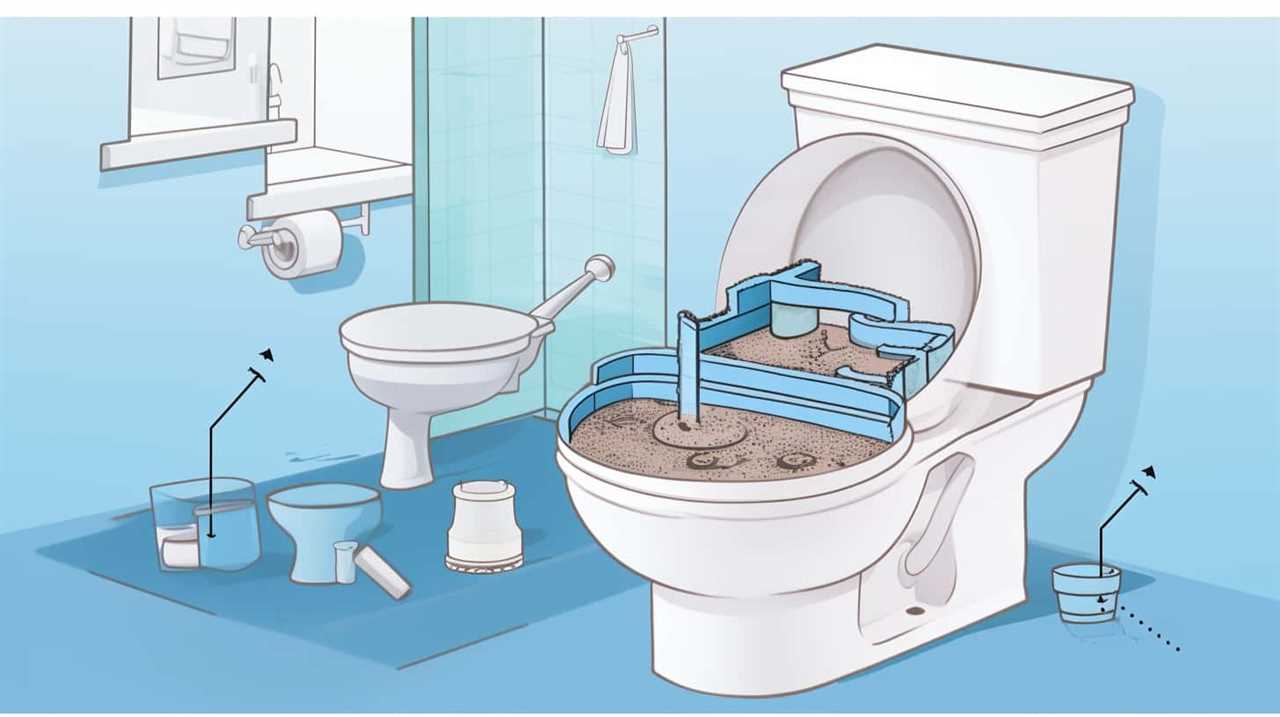Ladies and gentlemen, have you ever wondered why certain toilets flush with more power than others? Well, we’re here to enlighten you.
In this article, we’ll delve into the intricate factors that contribute to the strength of a toilet flush. From the design and shape of the bowl to the efficiency of the flushing mechanism, we’ll uncover the secrets behind this phenomenon.
So sit back, relax, and prepare to master the art of understanding the mighty flush.
Key Takeaways
- The design and shape of the bowl, including its curvature, slope, and the position and size of the outlet, play a crucial role in ensuring a smooth and rapid water flow, as well as a powerful suction force, which helps prevent clogs and ensures thorough cleaning.
- Water pressure and flow rate are important factors in determining the strength of a flush. Higher water pressure and a greater flow rate result in a stronger flush, as they provide more force through the toilet’s internal mechanisms and expel a larger volume of water from the bowl. However, consideration of environmental impact is also important.
- The efficiency of the flushing mechanism is influenced by factors such as the size of the flush valve, the design of the trapway, and the siphonic action. Larger flush valves and enhanced trapway design improve efficiency, while a more powerful flush can be achieved with less water usage, contributing to water conservation and sustainability.
- The tank size and water volume also affect the strength of a flush. A larger tank holds more water, enabling a stronger flush. Gravity-assisted flushing, which utilizes the weight of the tank, allows for efficient waste removal without excessive water usage. It is important to ensure that the tank size is appropriate for optimal flush strength. Regular maintenance, including plumbing system inspections and proper toilet usage, is necessary to prevent clogs and ensure a strong flush.
Bowl Design and Shape
One factor that contributes to the strength of a toilet flush is the shape and design of the bowl. The flush efficiency of a toilet is greatly influenced by the geometry of the bowl.
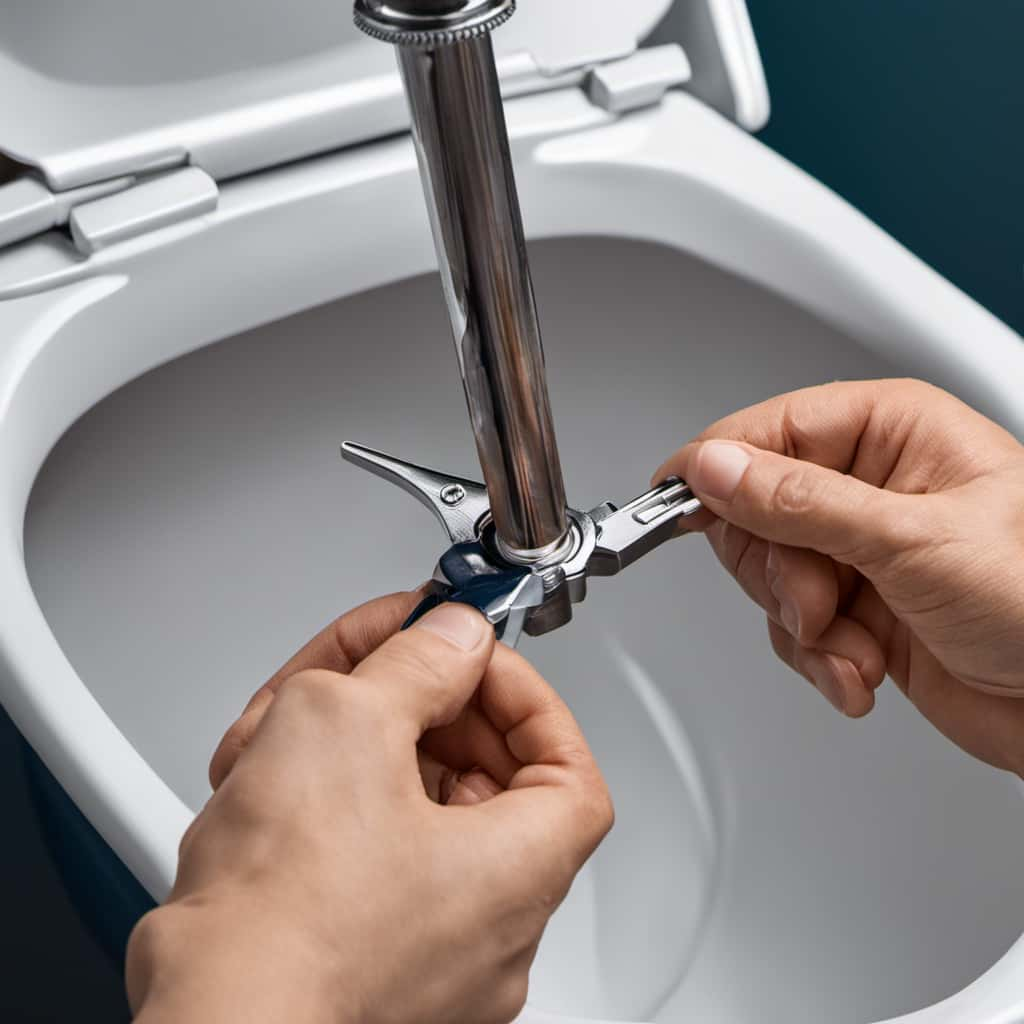
The curvature and slope of the bowl, as well as the position and size of the outlet, play crucial roles in optimizing flush performance. A well-designed bowl ensures that water flows smoothly and rapidly, creating a powerful suction force that efficiently removes waste.
The shape of the bowl also affects the direction and velocity of the water flow, ensuring thorough cleaning and preventing clogs. By carefully considering toilet bowl geometry, manufacturers can enhance flush efficiency, providing users with a more effective and reliable flushing experience.
Water Pressure and Flow Rate
Now let’s delve into the subtopic of water pressure and flow rate, which directly impacts the strength of a toilet flush.
Water pressure refers to the force at which water is delivered through the plumbing installation. A higher water pressure can result in a more powerful flush, as it pushes the water with greater force through the toilet’s internal mechanisms.
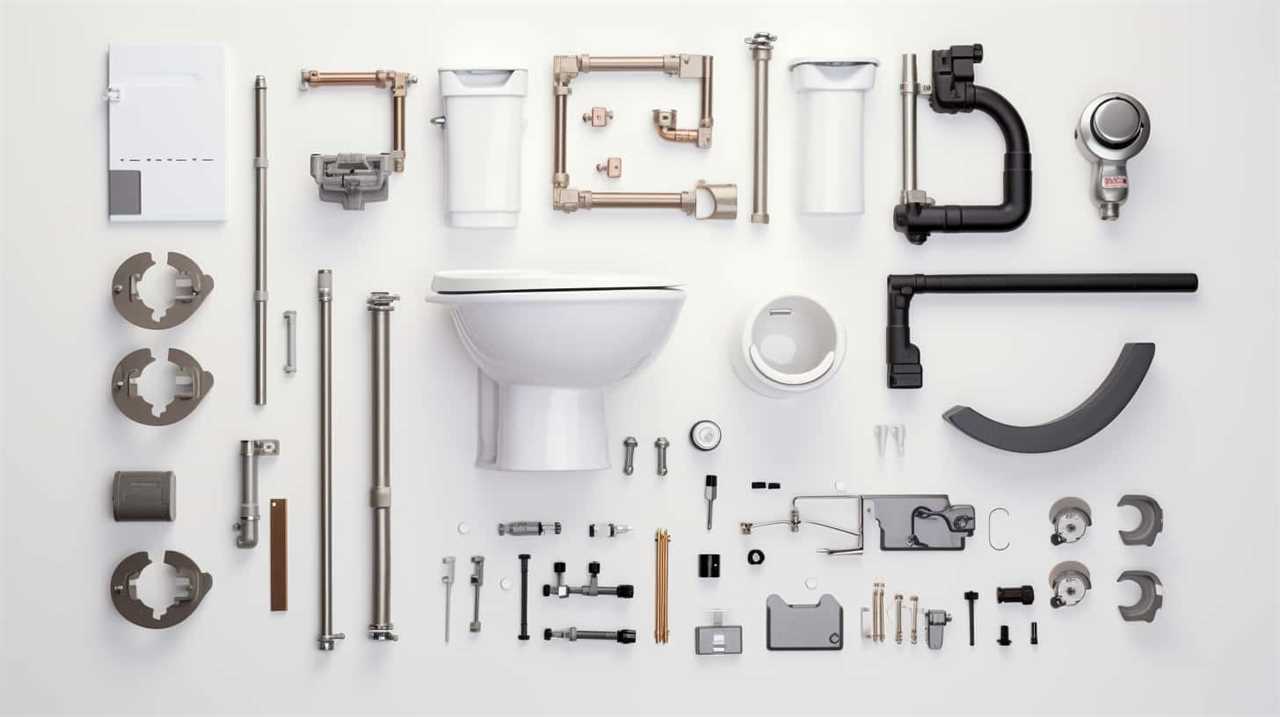
Flow rate, on the other hand, refers to the volume of water that flows through the toilet per unit of time. A higher flow rate can also contribute to a stronger flush, as a larger volume of water is expelled from the bowl.
It’s important to note that while a strong flush is desirable, it also has an environmental impact. Excessive water pressure and flow rate can lead to wastage of water, which is an important consideration in today’s world.
With an understanding of water pressure and flow rate, we can now move on to the next section, where we’ll explore flushing mechanism efficiency and its role in toilet performance.
Flushing Mechanism Efficiency
To further understand why some toilets flush stronger than others, we’ll now explore the efficiency of their flushing mechanisms.

Flushing mechanism efficiency is a crucial factor in determining the strength and effectiveness of a toilet’s flush. Toilet engineering innovations have played a significant role in improving the efficiency of flushing mechanisms over the years.
These innovations include the development of larger flush valves, improved trapway design, and enhanced siphonic action. By optimizing these components, toilets can achieve a more powerful flush while using less water.
This not only improves the overall performance of the toilet but also reduces the environmental impact of flushing mechanisms. Efficient flushing mechanisms help conserve water, lower water bills, and contribute to sustainable living.
Thus, advancements in toilet engineering continue to drive improvements in flushing mechanism efficiency.
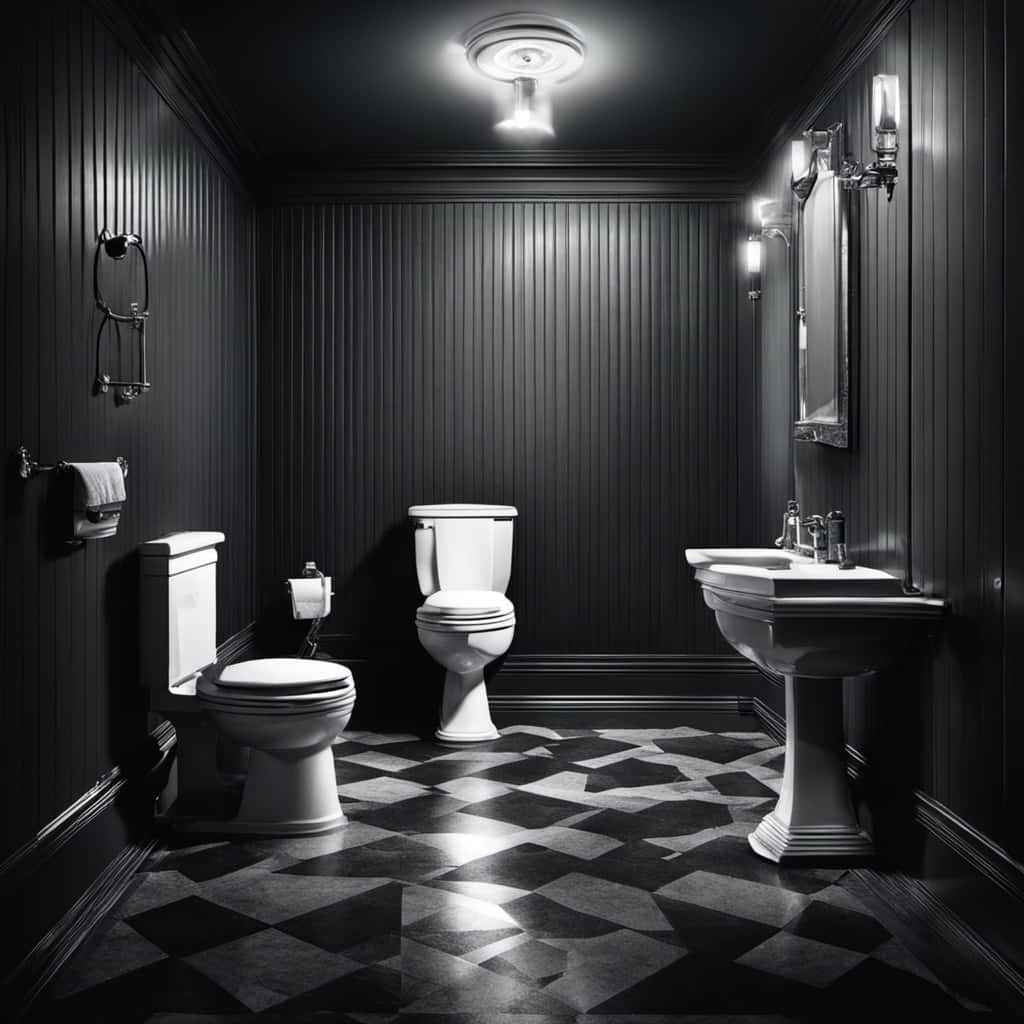
Tank Size and Water Volume
As we delve into the subtopic of tank size and water volume, it’s important to understand how these factors contribute to the strength and effectiveness of a toilet’s flush.
The flush handle position plays a crucial role in determining the amount of force that can be applied to the flush mechanism. A well-positioned handle allows for optimal leverage and control during the flushing process.
Additionally, the size of the tank directly affects the volume of water available for each flush. A larger tank can hold more water, resulting in a more powerful flush.
Furthermore, gravity assisted flushing relies on the weight of the water in the tank to create the necessary pressure for a strong flush. This natural force allows for efficient waste removal without the need for excessive water usage.
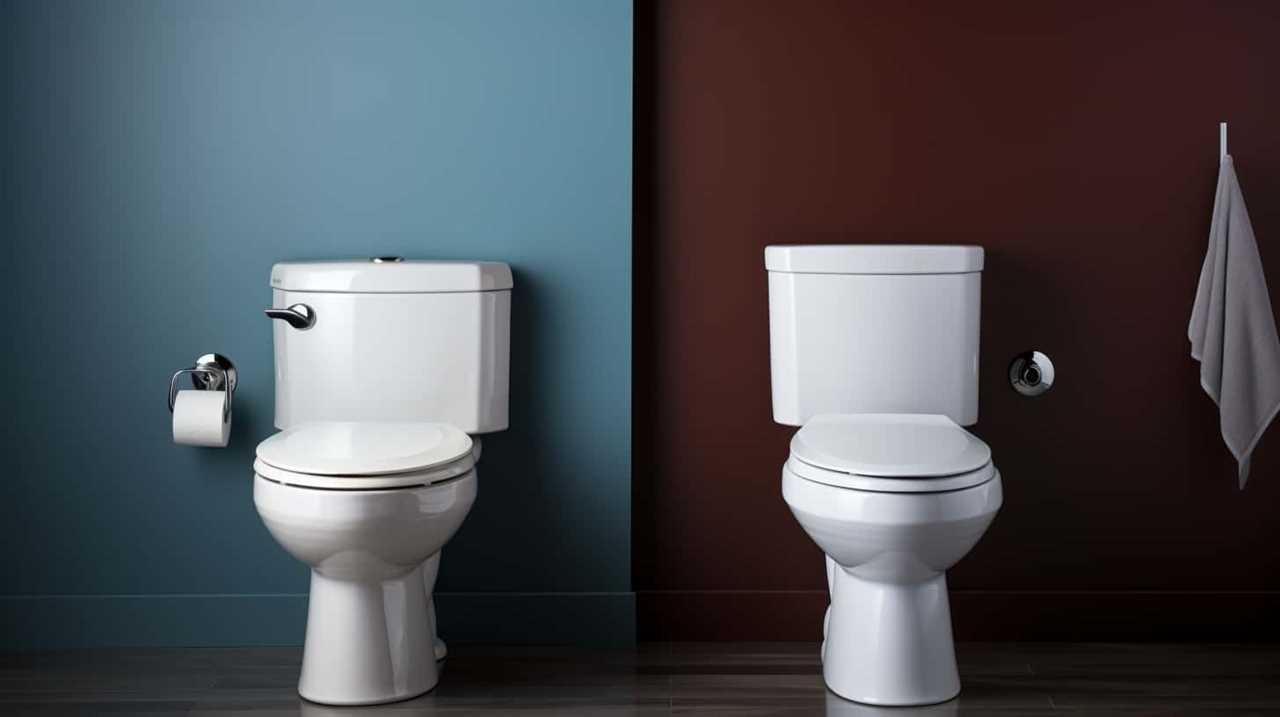
Maintenance and Clogs
Regular maintenance and prevention of clogs are essential for ensuring that toilets consistently flush with optimal strength and effectiveness.
To maintain the strength of the flush, it’s important to conduct regular plumbing system inspections. This allows for early detection of any potential issues, such as blockages or leaks, that could affect the flush performance.
Additionally, being mindful of toilet usage and habits can help prevent clogs. Avoid flushing excessive amounts of toilet paper or flushing items that aren’t meant to be disposed of in the toilet.
It’s also important to educate household members on proper toilet usage, such as not flushing feminine hygiene products or excessive amounts of waste.

Frequently Asked Questions
How Do Different Bowl Designs and Shapes Affect the Strength of a Toilet Flush?
Different bowl designs and shapes play a crucial role in determining the strength of a toilet flush. Factors like the angle of the bowl, the width of the rim jets, and the location of the siphon jet all contribute to the flushing power.
What Factors Determine the Water Pressure and Flow Rate in a Toilet?
Water pressure regulation in modern toilets ensures consistent water pressure during a flush. Factors like water pressure and pipe diameter impact flush strength, as they determine the flow rate and force of water.
How Does the Flushing Mechanism Efficiency Impact the Strength of a Toilet Flush?
Flushing mechanism innovations greatly impact the strength of a toilet flush. By improving water pressure, these innovations enhance the flushing efficiency, resulting in a stronger flush.
What Role Does the Tank Size and Water Volume Play in Determining the Strength of a Toilet Flush?
The tank capacity and water volume directly influence the strength of a toilet flush. The greater the tank capacity, the more water available to create pressure, resulting in a stronger flush.
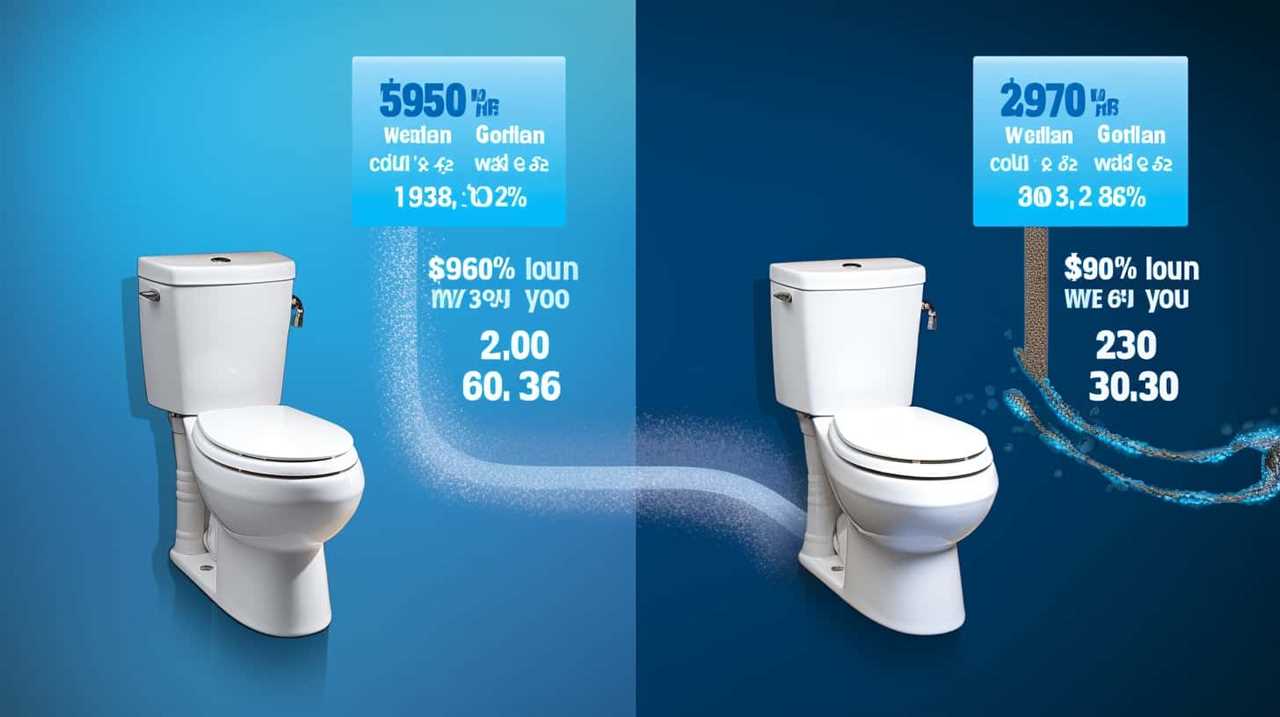
How Does Maintenance and Clogs Affect the Strength of a Toilet Flush?
Maintenance and clogs have a significant impact on the strength of a toilet flush. Regular maintenance ensures optimal performance, while clogs can restrict water flow, resulting in a weaker flush.
Conclusion
In conclusion, the strength of a toilet flush can vary due to several factors.
The design and shape of the bowl, water pressure and flow rate, flushing mechanism efficiency, tank size, and water volume all play a role.
Regular maintenance and preventing clogs are also important.
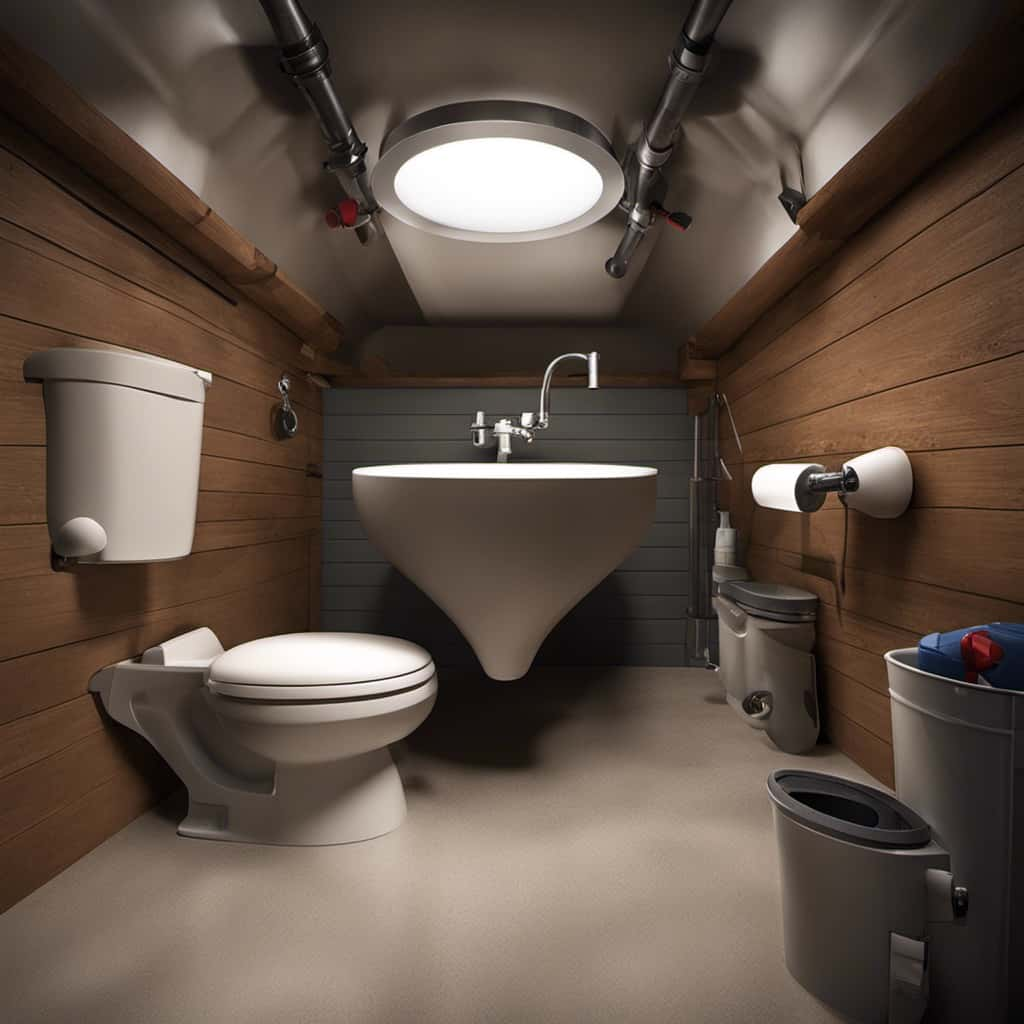
Understanding these factors can help us appreciate the intricacies of toilet engineering and ensure an efficient and powerful flush.
So next time you flush, remember the hidden power behind it and marvel at the engineering marvel that’s the toilet.






